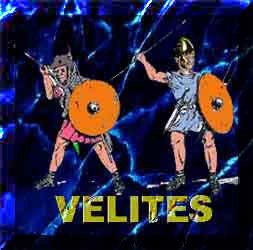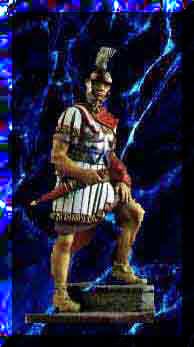
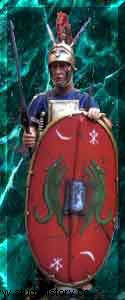
In order to celebrate the divine essence of Rome Livy and other historians have created the legend of the origins of the city. Aeneas flees from Troy and comes to seek refuge on the coasts of Latium. One of his descendants unites with Mars and gives birth to twins:Romulus and Remus who were suckled by a wolf.
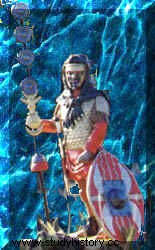
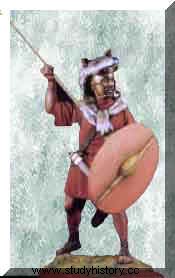
Rome also retains an excellent army Polybius left an admiring description of it:no doubt he wrote half a century later:the risks of anachronism exist, but they are weak, and archeology makes it possible to make more concrete some descriptions.
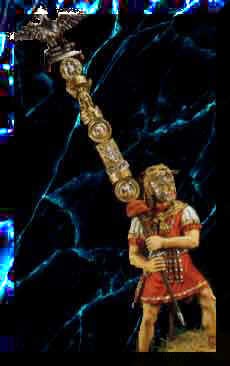
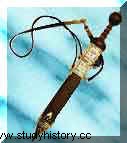 At the beginning of the conflict, the supervision of the four legions was still provided by magistrates elected by the comitia, at the summit by the two consuls (or by the lenders, or by prorogated magistrates, propraetors or proconsuls), and by the 24 tribunes; the centurions were appointed. The velites preceded the legion; they used a sword and javelins, protected themselves with a round shield called 'parma', and a helmet. The heavy infantry was further divided into hastats, principles and triaires. Hastats and principles carried as offensive weapons the 'Spanish' sword or gladius, which allows thrusting and cutting, and two javelins of the pilum type, one of which is heavy; they had as defensive weapons a long shield, a helmet with plumes, leggings and a coat of mail or a cuirass of the kardiophylax type, 'protector-heart'. Triaries had the same equipment, except that they replaced the pilum with a hasta, a long spear. In 218, they still applied the manipulative tactic, but the 45 manipulatives had been reduced to 30, still as offensive weapons the 'Spanish' sword or sword, which allows thrusting and cutting, and two javelins of the pilum type including a heavy one; they had as defensive weapons a long shield, a helmet with plumes, leggings and a coat of mail or a cuirass of the kardiophylax type, 'protector-heart'. Triaries had the same equipment, except that they replaced the pilum with a hasta, a long spear. In 218, they still applied the manipulative tactic, but the 45 maniples had been reduced to 30, still spread over three lines.
At the beginning of the conflict, the supervision of the four legions was still provided by magistrates elected by the comitia, at the summit by the two consuls (or by the lenders, or by prorogated magistrates, propraetors or proconsuls), and by the 24 tribunes; the centurions were appointed. The velites preceded the legion; they used a sword and javelins, protected themselves with a round shield called 'parma', and a helmet. The heavy infantry was further divided into hastats, principles and triaires. Hastats and principles carried as offensive weapons the 'Spanish' sword or gladius, which allows thrusting and cutting, and two javelins of the pilum type, one of which is heavy; they had as defensive weapons a long shield, a helmet with plumes, leggings and a coat of mail or a cuirass of the kardiophylax type, 'protector-heart'. Triaries had the same equipment, except that they replaced the pilum with a hasta, a long spear. In 218, they still applied the manipulative tactic, but the 45 manipulatives had been reduced to 30, still as offensive weapons the 'Spanish' sword or sword, which allows thrusting and cutting, and two javelins of the pilum type including a heavy one; they had as defensive weapons a long shield, a helmet with plumes, leggings and a coat of mail or a cuirass of the kardiophylax type, 'protector-heart'. Triaries had the same equipment, except that they replaced the pilum with a hasta, a long spear. In 218, they still applied the manipulative tactic, but the 45 maniples had been reduced to 30, still spread over three lines.
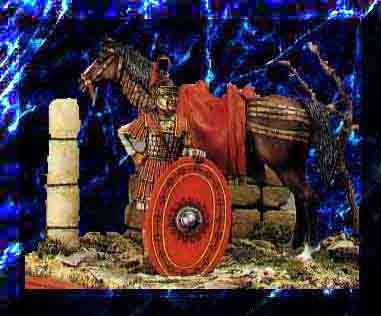
The horsemen, divided into 10 turmes, were armed in the Greek style, with cuirass, spear and shield. For a legion, one could count 1200 velites, the same number of hastas and principles, and only 600 triaires. The allies were to provide as many infantry as there were in a legion, and three times as many horsemen; they were placed on the wings and commanded by prefects.
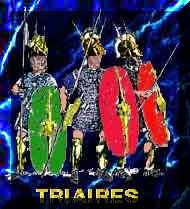
The camp does not seem to have changed since the first Punic War, nor the discipline. Polybius had other reasons for admiration. He had indeed noticed that the order of march of the Roman army obeyed a great logic. The general, when he was far from the enemy, placed his guard, the extraordinarii, in the lead, followed by part of the allies, by the legions, then by the rest of the allies, each body of troops being the hastats preceding the principles which they themselves were ahead of the triaires, so that if necessary a counter-attack could be launched immediately. The Greek historian, however, failed to see two important changes. Breaking, on the one hand, with the tradition of the four consular legions, Rome aligned, shortly after the beginning of the hostilities, six legions.
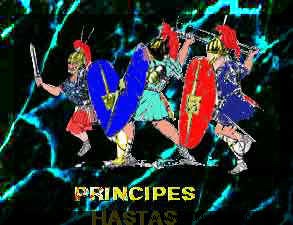
And this inflation of staff continued. On the other hand, Rome already had mastery of the sea in 218, and could field 220 quinqueremes, a total which practically prohibited any movement to the adversary. With such forces not only was it possible to prevail in the event of a battle squadron against squadron, but also it was possible to ensure the logistics of the ground forces, to carry out landings, to ensure liaisons. This maritime superiority, which constitutes a paradox, as we have already noted, is explained, at least in part, by the importance of the financial means available to Rome.
